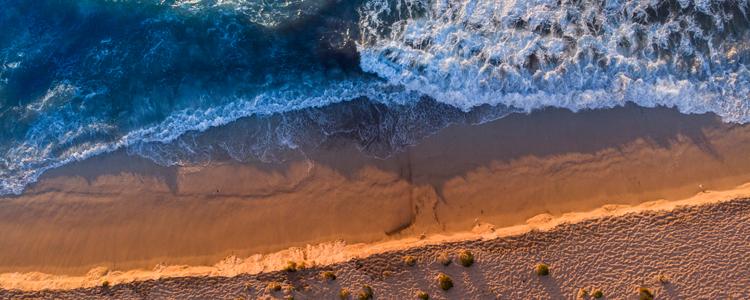
Securing supply
We have long term plans to secure a climate resilient water future that will support Perth's water needs for generations to come.
Find out more
Perth is the sunniest capital city in Australia with a long-term average of 8.8 hours of sunshine per day. But all those sunny days comes at a cost to Perth’s rainfall average. Due to climate change, Perth’s average annual rainfall has reduced around 20% since the 1970s.
It’s not just the total volume of rain that’s changed, it’s the way that rain falls that’s had an impact. Our rainy season starts later so we now have more sunny winter days. Plus, the stop-start nature of rainfall means catchments don’t receive consistent runoff. These changes translate to 80% less streamflow (rainfall runoff) into our dams.
Climate change has dramatically affected the sources of water for our largest drinking water scheme. The Integrated Water Supply Scheme can't rely on rainfall as it did in the 1970s and now includes desalinated seawater and groundwater replenishment.
Read a transcript of this video
Before 1975, Perth’s dams received an average of 420 billion litres of streamflow each year, enough to supply today's two million Perth people.
In comparison, between 2010-2018, Perth’s dams received an average of 72.5 billion litres of streamflow per year. Further evidence of climate change is the increased annual number of days in Perth over 35 ℃.
In 2015, Perth’s dams received the lowest level of streamflow since records began in 1911 – with 15.8 billion litres of water. To put that into perspective, it’s only enough water to supply Perth for around 14 hot summer days.
We’ve been responding to the changes to secure Perth's future water supplies by working towards our long-term targets outlined in Water Forever 50 Year Plan. This plan adopts a three-pronged approach, which includes:
Water for the Integrated Water Supply Scheme is now comprised of a combination of sources, including desalinated seawater, groundwater, groundwater replenishment and rainfall runoff into dams.
Australia’s first full scale Groundwater Replenishment Scheme is located at Craigie, in Perth’s northern suburbs. It started recharging recycled water to Perth’s deep aquifers in 2017. It has the capacity to recycle up to 28 billion litres a year, with half of this water recharging the Leederville and Yarragadee aquifers onsite and the remaining volume of water being transferred to recharge bores drilled in Wanneroo and Neerabup.

We have long term plans to secure a climate resilient water future that will support Perth's water needs for generations to come.
Find out more